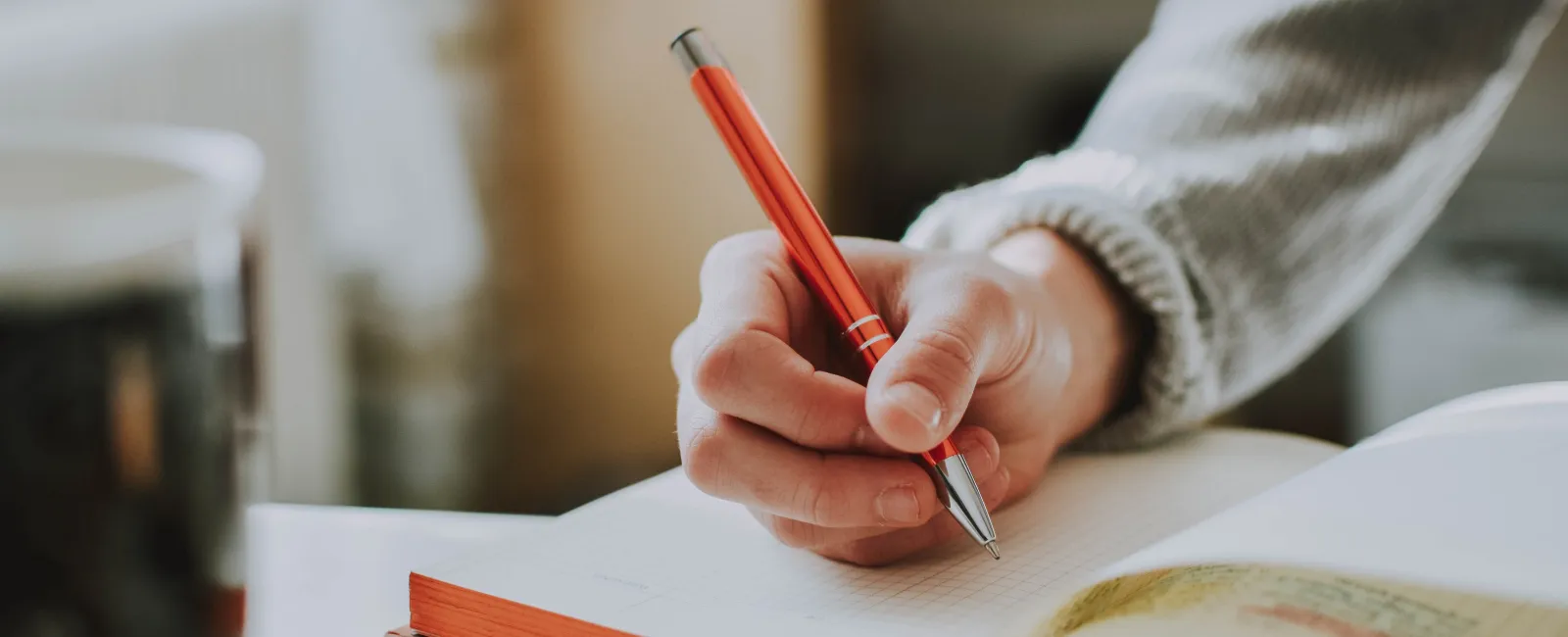Journaling is a great way to reduce your
stress levels, increase self-reflection, and build a better sense of
well-being. Overall, it can be a great tool for improving your mental health.
Through journaling, you can externalize thoughts you're having to assist in
processing those thoughts and the emotions that go along with those thoughts.
Keep reading to learn six different journaling techniques.
- Visual &
Artistic Journaling
If you're a creative and artistic person, art
could be a better way to process your feelings instead of words. As with all
types of journaling, there is no right or wrong way to do it. You could draw,
paint, collage, mix art with writing; whatever you see fit. You can express your feelings, keep track of ideas, and work through any challenges in a judgment-free zone through art.
- Freewriting
Freewriting is setting aside time to let your
thoughts flow and write without a specific prompt. You could write about what
you did that day, where you see yourself in 5 years, your favorite memory; it
could be whatever you want. Just allowing yourself to write without pausing or
worrying if you're staying on a topic can give you the time to sort through
something confusing and sort out your emotions. It can also help with
self-acceptance to spill out your emotions without any judgment.
- Unsent
Letters
Everyone has a person with whom they left things
unsaid or unresolved. With unsent letters, you can write down everything you
wished you said and everything you want to say without having to send it.
Whether it's expressing appreciation, anger, hurt, or love, an unsent letter is
a great way to release all of those feelings. It can be an extremely cathartic
way to manage your emotions.
- Planning
Journal
A journal can be a great way to plan your day
with goals and provide perspective to your day. Writing down your goals can
help you achieve them and assist in identifying your priorities. Utilizing
exercises such as writing down goals, listing what you're grateful for, and
naming items you're letting go of in your life. You can focus on your
priorities and include some positivity in your day so each day, you're working
towards being a better you.
- Gratitude
Journaling
Gratitude journaling is one of the most
powerful journaling techniques that can help improve your mental health and
well-being. Taking time to analyze what you're grateful for can make you a
happier person by highlighting the great things in your life. Don't try and
rush through these gratefulness prompts - take the time to dig deep and
experience those emotions.
A few examples of gratefulness prompts are:
-
A previous relationship that
helped you be the person you are today
-
An opportunity you have now that
you didn't previously
-
Experiences that have helped shape
you
- Bullet
Journaling
Bullet journals can be a great organization
tool if you're trying to get your life in order. Compared to a traditional
planner, a bullet journal can include whatever you want. It could be
to-do lists, habit trackers, brainstorming, reminders, mood trackers, and more.
Bullet journals are meant to include all that you deem important in your life
and want to keep track of. You can design the pages in whatever format works
best for you. With bullet journaling being extremely popular within the past
ten years, there is plenty of inspiration online on how to structure your own
bullet journal.
Journaling is a great way to start taking
strides to improve your mental health and overall well-being. AccessOPEN is a
health care program that allows its members to only pay for medical care when
they need it. To prioritize your physical health, AccessOPEN can be a great
option for managing your health care expenses. Check out our website to learn
more today.
Sources:
https://vanillapapers.net/2020/08/25/journaling-techniques/
https://slowgrowth.com/blog/best-journaling-methods/

